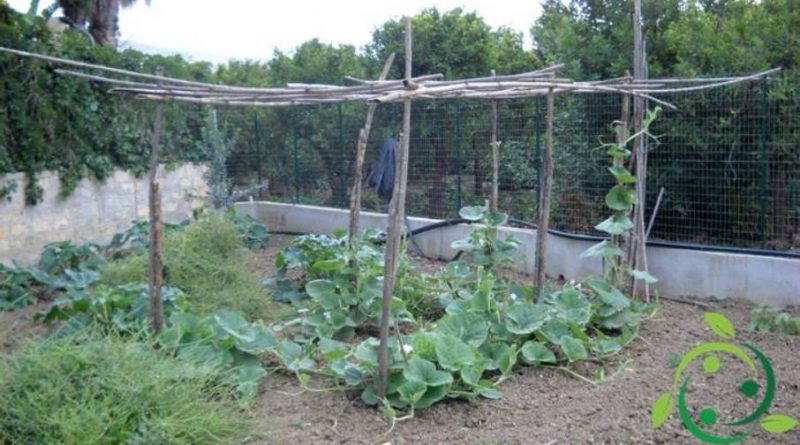How to cultivate the Sicilian zucchini in a biological way
How to cultivate the Sicilian zucchini in a biological way
The cultivation of this courgette (Lagenaria longissima), particularly widespread in southern Italy (but it is possible to grow it also in the north from the month of May) needs rather high temperatures to grow and fructify and does not tolerate the early autumn humidity well. For the production of excellent and tapered zucchini (which can easily exceed the meter) it is necessary to create real pergolas (resistant to bear the weight of the plant and fruit) made with the common cane to which the plant is attacked by plant filaments quite similar to the vine tendrils. It is good that the pergola has a height of two meters to allow not only the growth of the fruit but above all the cuttings and the harvest.
The barrels are held firmly together by means of a raffia (better the natural one) previously wet and then prepared for the races the vertical and horizontal pipes. The sixth is good that it is between plant and plant (and therefore between the reeds) of 1.0 – 1.5 m on the row and 1.50 to 2.00 m between rows. Near each vertical barrel you can plant or a small group of seeds (of which then during the first stages of growth you will leave the most robust) or directly with already developed seedlings; it is good in the months prior to sowing (which is done in the period of March-April) to make organic substance that will be mixed during a first processing.
The harvest of the long courgettes (50-60 days from the transplantation) must take place when they are already developed but still tender (just fling them slightly to understand it). Exceeded this period it goes into excessive maturation with the presence of too many coriaceous seeds and the spongy and less savory pulp.
The formation of these zucchini (as for the others) happens on the female flowers that are on the secondary branches that are born from the main jets. To distinguish female and male flowers (if you are not expert) just consider that the male ones are whitish and inconspicuous. The growth of this plant is very fast and to encourage it, the topping is performed, which consists in removing the apices of the main branches. After a few days, from the underarms of the underlying leaves, new shoots will grow, destined to become long branches, which in turn will offer other “tops” to be collected. These tops are called “tenerumi” and cooked in various ways including the famous pasta with tenderloins.
Among the adversities and phytopathies I remember: the bottleneck of the collar that can occur after transplantation due to excessive heat; scatolatura, which manifests itself with fruits with internal cavities caused by excess water and nitrogen, high temperature ranges and high air humidity; sunstroke, which manifests itself with fruits presenting burns as a result of exposure to the sun due to the lack of leaves; hydropic maculatures, with presence of oily spots on the skin due to excess of environmental humidity and soil; fruit splits due to incorrect irrigation during the ripening period.
To combat pests so as not to have residues it is advisable to carry out spraying with natural products such as: vegetable oils, Marseilles soap, nettle extracts, garlic, propolis, etc. Also remember that these plants, with appropriate measures can be associated with green beans and potatoes, while for the rotation do not return the plant on the same plot before at least three years and never grow it after watermelons, cucumbers, melons, etc.

